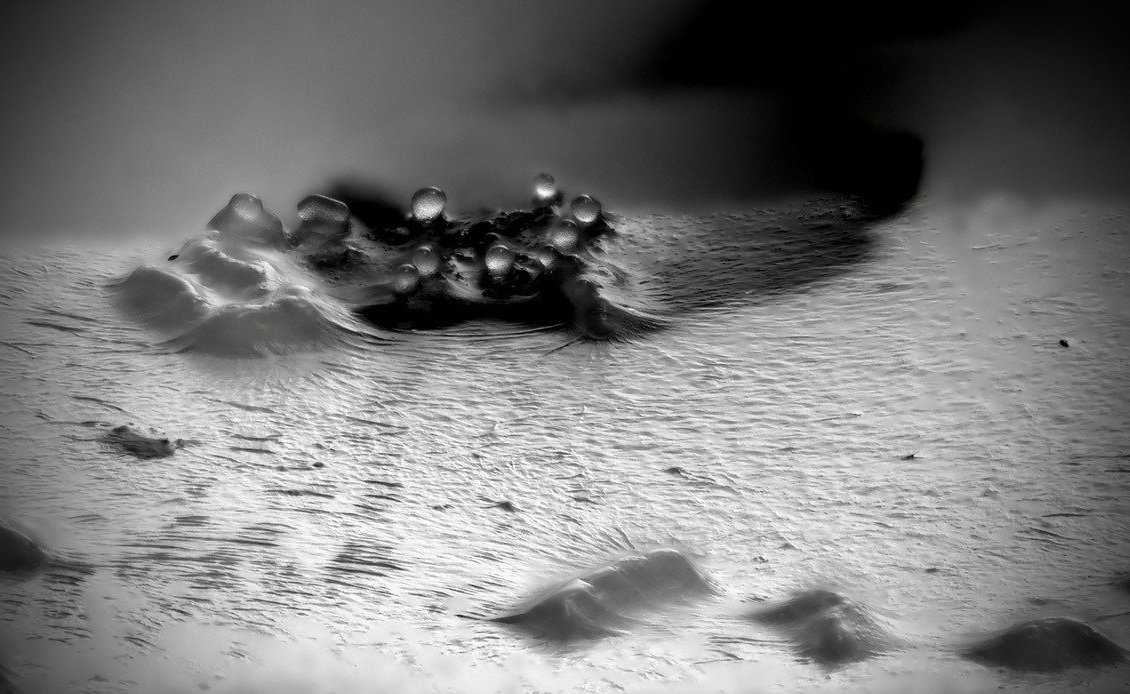
Background
Selection from biotic interactions such as predation and sexual reproduction often shapes the evolution of developmental systems. Other forms of socially mediated selection, such as from competition or cheating, might also impact developmental evolution but are less studied.
Aggregative systems such as myxobacteria allow manipulation of cell-level social interactions that may influence development.
MyxoEE-7 was designed to test whether the character of cellular interactions during aggregative development matters for the morphological evolution of fruiting bodies.
Design summary: A focal M. xanthus strain resistant to the antibiotic kanamycin evolved while repeatedly undergoing starvation-induced development in mixture with each of several non-evolving, kanamycin-sensitive partners over 10 cycles. Most non-evolving partners exhibited either cheating or antagonism toward the evolutionary ancestor; one control partner was a cooperative sibling variant of the ancestor.
In each cycle, spores were heat-selected after five days of development and the co-developmental partner was killed off with kanamycin in a subsequent growth-phase in liquid. After growth, each antibiotic-resistant population was then again mixed with the same non-evolving partner as in previous cycles to initiate the next cycle.
Highlights
Sociality shapes morphological evolution
M. xanthus populations diverge morphologically during evolution if exposed to diverse sources of social selection during development (see Design Summary). The evolutionary trajectories are specific to the cellular character of social interactions. In other words, evolving in the presence of one kind of social partner influences developmental evolution and, thus, future morphology. Evolutionary differences generated by the distinct developmental partners became more pronounced over time.
Developmental phenotypes of the experimental ancestor and one evolved replicate population from four of the eight developmental-partner treatments after four and ten cycles of evolution. The evolved populations imaged here all descend from the same ancestral subclone.
Antagonists favor maintenance of aggregative development
Evolving populations that repeatedly met antagonistic strains during the starvation phase of each cycle retained the ability to cooperatively form fruiting bodies to a much higher degree than populations that repeatedly met the benign ancestor or cheaters. The antagonist strains used in this study were known to greatly harm the evolutionary ancestor during co-development. Generating spatial segregation from antagonistic cells through the developmental process may have given evolving populations some degree of protection from antagonists. These results raise the question of whether social antagonisms have promoted the evolutionary emergence and maintenance of many forms of aggregative multicellularity.
Means of fruiting body (FB) counts of the eight ancestral sub-clones (black circles), all evolved populations considered together (open circles), populations evolved with no partner (no-DP, grey circles), evolved populations partnered with ANC* ( purple circles), all surviving populations partnered with a cheater (red circles) and all surviving populations partnered with an antagonist (blue circles) after four and 10 evolutionary cycles. Circles represent cross-assay means (n = 3) of within-assay trait averages across all populations within each category. Stars represent significant differences relative to Anc and line connectors indicate significant differences between the respective categories of evolved populations. (Error bars are S.E.M.).
Evolutionary independence of sporulation from fruiting body formation
In most studies of myxobacteria development, sporulation proficiency is generally correlated with proficiency at developing well-formed fruiting bodies. Most mutations that substantially reduce one of these traits also reduce the other. During MyxoEE-7, multiple evolving populations - especially those evolving in the presence of cheaters - became almost completely defective at forming fruiting bodies but nonetheless retained the same sporulation efficiency as the ancestor. Thus, sporulation became decoupled from fruiting-body formation during evolution.
Ancestral vs treatment-level evolved spore production and fruiting-body (FB) counts (n = 3, error bars are S.E.M.)
Deterministic degrees of stochastic morphological diversification
Initially identical replicate populations evolving under the same conditions can diversify due to random variation in mutational input. However, MyxoEE-7 illustrates that the quantitative degree to which such populations randomly diversify in their morphologies might be constrained by the selective environment. The degree of diversification among replicate populations that evolved while meeting the same developmental partner differed according to whether their non-evolving partner was a cheater, an antgonist or a cooperator.
Developmental partners differentially determine patterns of stochastic morphological diversification and deterministic convergence. Quantification of morphological diversification among the eight Anc subclones and among evolved populations within each co-developmental-partner treatment and treatment category after four and ten evolution cycles. Colored shading highlights treatment categories. Dashed lines indicate treatment-category means and surrounding darker shading indicates the corresponding s.e.m. Non-overlapping letter sets and connecting solid-black lines indicate significant differences between mean values of treatment and treatment categories, respectively (n = 3, error bars are S.E.M.).
Publication
La Fortezza, M. and G. J. Velicer. 2021. Social selection within aggregative multicellular development drives morphological evolution. Proceedings of the Royal Society B. READ IT HERE